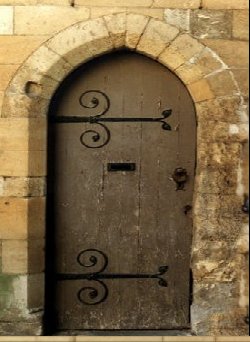|
|
|
|
Doors to the Past |
|
were listed among the slave holders in the neighborhood: John Morris, John and Nathan Everett; Charles, William, and Daniel Love; John, Henry, and Thomas Dundas and their sisters, Miss Eliza Dundas and Mrs. Sophia Peyton; Sampson Handley; William P. Yates; Jonathan Switzer; Dr. Alexander McCorkle; David Harshbarger; Thomas, Chapman and Beverly Maupin; Adam and William Black; James Newman; Andrew Guinn; John Miller; William Simmons; Thomas, George and Jeremiah Killgore; and Mrs. Martha Saunders and son Sampson Saunders. Sampson Saunders was the largest slave owner in the history of the county. Besides he owned a vast landed estate and other personal property, and he was reckoned the wealthiest citizen up to the days of the Civil War. His wife and only child died some years before his own death, and after setting free his numerous slaves in accord with the provisions of his will, his large landed and other personal estate was heired by his only sister, Mrs. Thomas Killgore. Thomas Killgore himself owned a plantation of more than one thousand acres beyond Milton and he owned many slaves. Prior to the Civil War the number of slaves was decreasing in this section, and with the close of the Civil War that chapter in the neighborhood's history closed. A few devoted servants remained with their masters as long as they lived. With few exceptions the masters were faithful and kindly protectors of their wards; and for the most part the slaves looked upon their ovmers as their truest friends and only refuge both during and after slavery days. To our parents and grandparents the period from 1840 to 1860 seemed the golden era in the social life of the valley. Social comforts were few, but the evidence of neighborly friendship was always present. This made life out toward the frontier altogether agreeable. It was during this period that the first private carriage was brought to the neighborhood by Thomas Dundas, and the first cooking stove by Ambrose Doolittle. Doctors In the early day the only professional men in the community were the physicians. They located in places of easiest access to the surrounding country. In this immediate neighborhood Doctors John Seashole, Allen Love, Strother J. Yates, Alexander M. McCorkle, Charles and Randolph Moss, Frank L. Murphy, Bennett C. Vinson, and Calvary A. Morrison were the physicians covering the period from 1820 to 1880. These men were devoted to their profession and more devoted to the needs of their fellow citizens. They rode many miles on horseback over the worst of roads in all kinds of ( 7 )
|
